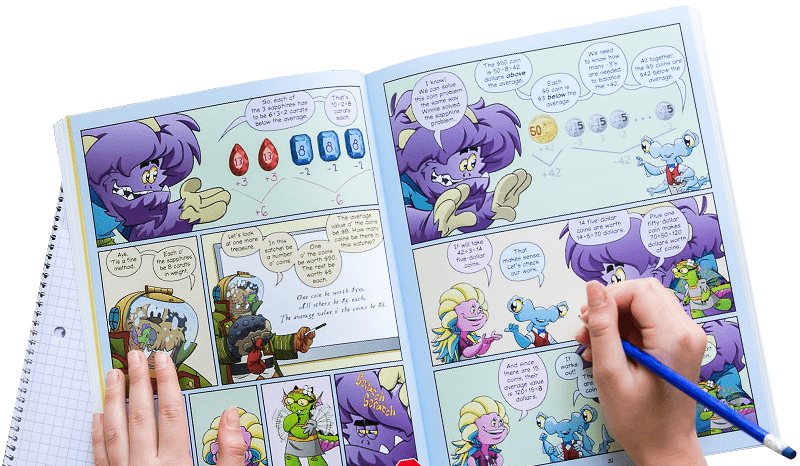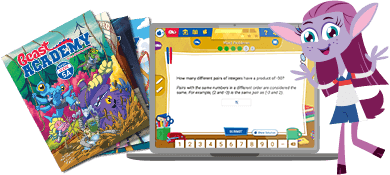Fortune Teller
In this simple symmetry illusion, magically point the arrow wherever you choose.
Instructions
First, make the arrow. Cut a small square of cardboard that is small enough for a little magician's hands to hold opposite corners easily. The trick is also easier if the cardboard is sturdy.
Next, add the arrows. You can draw them with a marker, or glue on arrows cut out of paper as we did in the video.
You've got to add the arrows carefully for the trick to work. On the front, draw the arrow facing up.
Turn the cardboard over so that the arrow is still pointing up on the back. Then draw an arrow pointing to the right. It's important that the arrow on the back is pointing up (even though you can't see it) and the arrow on the front is pointing to the right. Here is a picture of the arrows on a thin piece of paper, with the marker bleeding through the paper a bit, so that you can see how they are both oriented.
Actually, it would also be fine if the back arrow were pointing down, or the front arrow were pointing left. The important thing is that one of the arrows be up/down, and the other left/right.
Now that you've got your fortune teller made, it's time to figure out how to use it. Hold the square on opposite corners and flip it over.
Flip several times. Is your arrow always pointing in the same direction, or is it switching back and forth?
Now hold your square on the other pair of opposite corners and flip it over. Whatever it was doing previously (always pointing the same way, or switching back and forth), now it will be doing the other.
In other words, you control whether the arrow alternates directions or not by which pair of opposite corners you hold! (Try not to make this too obvious when performing the trick. Though, for young magicians, it doesn't really matter of course.)
It will definitely take some practice to perform this trick. Before you start the trick, note whether the corners you are holding cause the arrow to alternate or not. As you ask questions, you need to keep track of whether you are in "alternating" mode or "same direction" mode. If the arrow is pointing at you and you want it to point at you again when flipped, make sure you hold the "same direction" corners of the square. If you want it to instead point away from you, make sure you hold the "alternating" corners of the square.
See the Learning Notes below for some insights into how this trick works.
Don't forget: it's Beast Academy Playground, not Beast Academy Study Hall. Change the rules, be silly, make mistakes, and try again. The Variations and Learning Notes are here for you if you want to dive deeper, but not all of them apply to learners of every age. The most important thing is to have fun.
What do you think of this activity?
We're always looking to improve. Submit your feedback to us below.
- cardboard
- marker
- symmetry
- wonder
- 4.G.A.3

Ready to level up?
Keep problem solving with Beast Academy’s full math curriculum for students ages 6–13. Check out our captivating comic book series and immersive online platform.
LEARN MOREBring problem-solving to your classroom
Keep your entire class engaged with a full book and online math curriculum, for students ages 6–13. 98% of teachers say they’re satisfied with Beast Academy.
LEARN MORE



Ready to level up?
Keep problem solving with Beast Academy’s full math curriculum for students ages 6–13. Check out our captivating comic book series and immersive online platform.
LEARN MOREBring problem-solving to your classroom
Keep your entire class engaged with a full book and online math curriculum, for students ages 6–13. 98% of teachers say they’re satisfied with Beast Academy.
LEARN MORE
Sign up to be notified when new videos are released.
















































